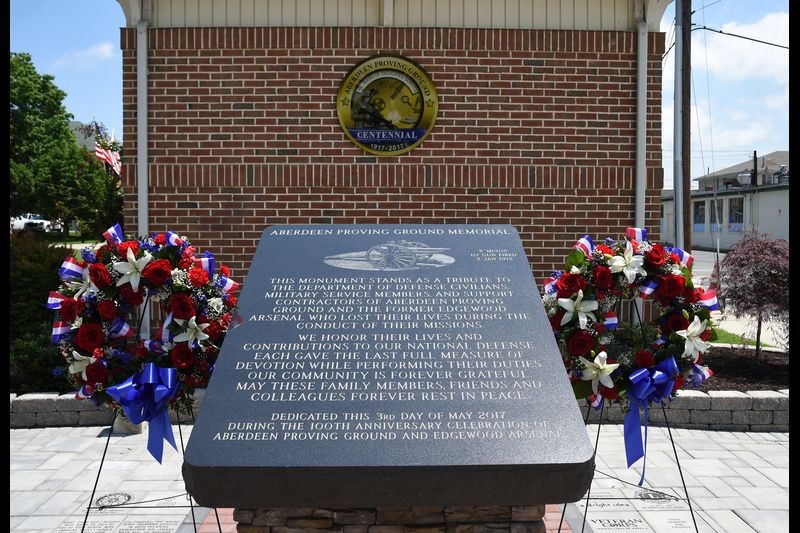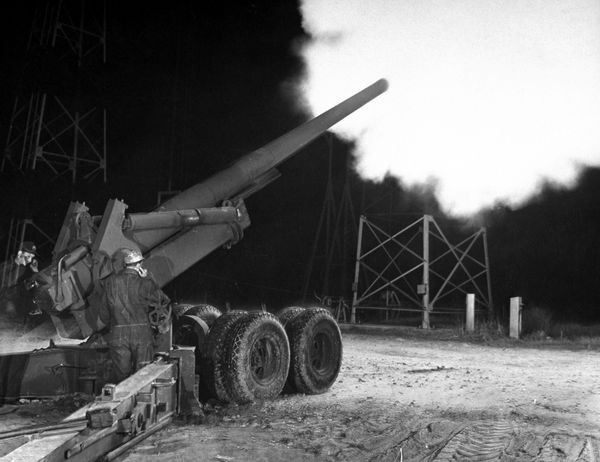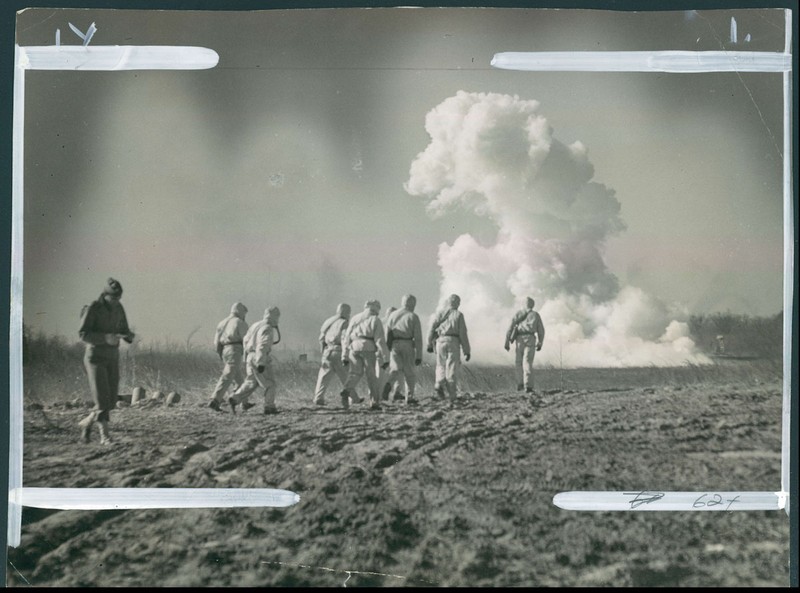Aberdeen Proving Ground Memorial
Introduction
Text-to-speech Audio
Images
The Aberdeen Proving Ground Memorial

Test Fire of Portable Artillery at Aberdeen, 1942

Chemical Weapons Testing at Edgewood, 1943

Backstory and Context
Text-to-speech Audio
Established October 20, 1917, this is the United States Army’s oldest active testing facility for weapons. The location of the new grounds allowed for the design and testing of larger weapons, compared to the previous range at Sandy Hook. Between the 1930s and 1950s, Aberdeen Proving Ground and its partner facilities experienced immense growth involving the implementation of new technologies and more scientific facilities, including the Human Engineering Laboratory in 1952. During the 1960s and 1970s Aberdeen Proving Ground managed ten test installations across the country as well as being tasked in developing the Decision Information Distribution System, created to deliver a warning to the public in case of nuclear attack. Since the beginning of the 1980s Aberdeen’s workforce has remained around 14,000 military and civilian employees since its peak during World War II. Aberdeen participated in Operation Desert Shield/Desert Storm and the Global War or Terrorism testing equipment, vehicle protection systems, and other essential needs in order to increase the effectiveness of the United States Military.
The area has been polluted by munition tests and includes large areas of land and water that have been exposed to substances such as napalm, white phosphorus, and various chemical agents. In addition, Edgewood Chemical Biological Center saw the production of mustard gas, chloropicrin, and phosgene, Edgewood Arsenal became the epicenter of all chemical and toxic programs ran by Aberdeen Proving Ground. From 1917 to the present, Edgewood has conducted chemical research programs, manufactured chemical agents as well as testing, storing, and disposing toxic materials.
This memorial is a response to a number of classified medical studies at Edgewood by the United States Army Chemical Corps lasting from 1955 to 1975. The purpose of these tests was to study the impact of a low dose of chemical warfare agents on personnel, pharmaceuticals, and protective clothing. Around 7,000 service members participated in these experiments and were exposed to more than 250 different chemicals. Long term effects of the agents remain unknown, but many scientists believe that exposure to these chemicals has led to illness and premature death. Agents from these experiments include nerve agents, mustard agent, nerve agent antidotes, nerve agent reactivators, psychoactive agents, irritants, as well as riot control agents. Testing along the shoreline of the facility included Agent Orange and Agent Orange Plus Foam.
Following a hearing by Congress, an Army investigation found no serious injuries or deaths associated with the program. However, they found that informed consent was not part of the recruiting process for volunteers who likely feared repercussions. Since the end of human testing, a number of suits were filed, citing the U.S. Army as liable for the experiments. Other efforts by outside organizations and Veterans Affairs have sought to help those who believe that their health was adversely affected by the experiments.
Sources
“APG Memorial.” APG 100th Anniversary. Accessed July 8, 2020. http://apg100.org/apg-workforce-memorial-construction-fund/.
“APG's 100 Year History.” APG Discovery Center. Accessed July 8, 2020. https://apgdiscovery.com/apg-history/explore-apgs-history/.
“History: Aberdeen Proving Ground .” History :: U.S. Army Aberdeen Proving Ground. Accessed July 8, 2020. https://home.army.mil/apg/index.php/about/history.
US Department of Veterans Affairs, Veterans Health Administration. “VA.gov: Veterans Affairs.” Protect your health. Veterans Affairs , December 12, 2013. https://www.publichealth.va.gov/exposures/edgewood-aberdeen/index.asp.
https://www.baltimoresun.com/maryland/harford/aegis/ph-apg-memorial-dedication-pg-20170531-photogallery.html
https://www.computerhistory.org/revolution/birth-of-the-computer/4/80/330
http://darkroom.baltimoresun.com/2017/04/chemical-weapons-testing-at-edgewood-arsenal-through-the-years/edgewood-arsenal-md-scenes-chemical-warfare-4/
